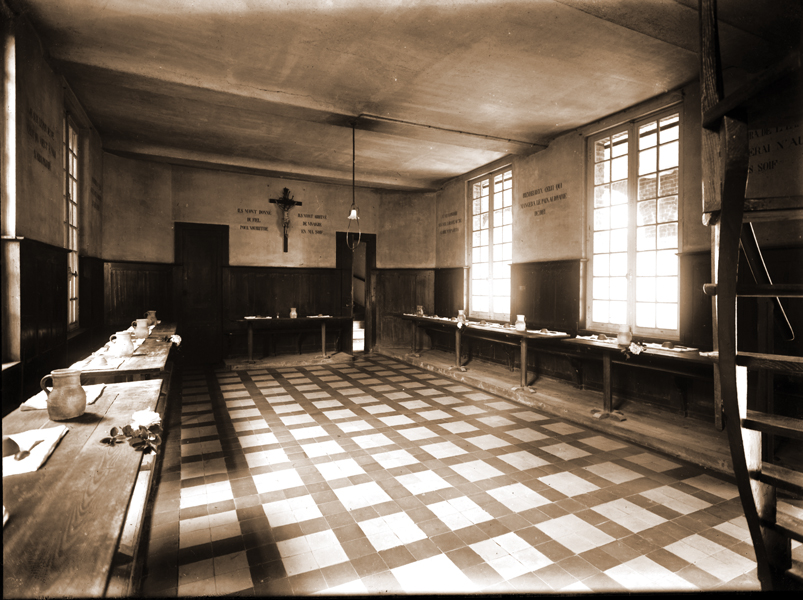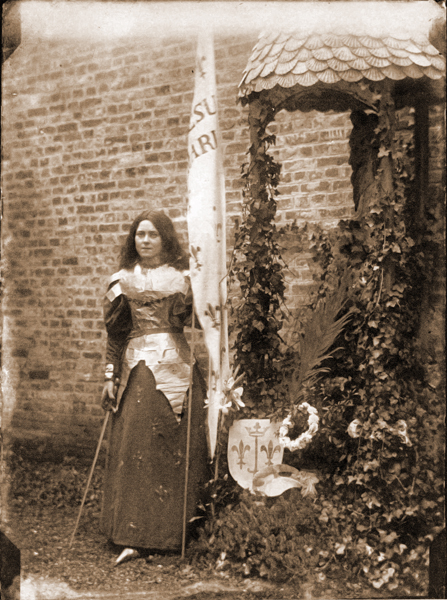How is the meal eaten?
The community comes from the choir to the refectory in procession. When they arrive, the sisters bow before the cross and line up near the tables. A weekly sister blesses the table, then the sisters sit down at the table in silence, and the reader goes up to the pulpit to read.
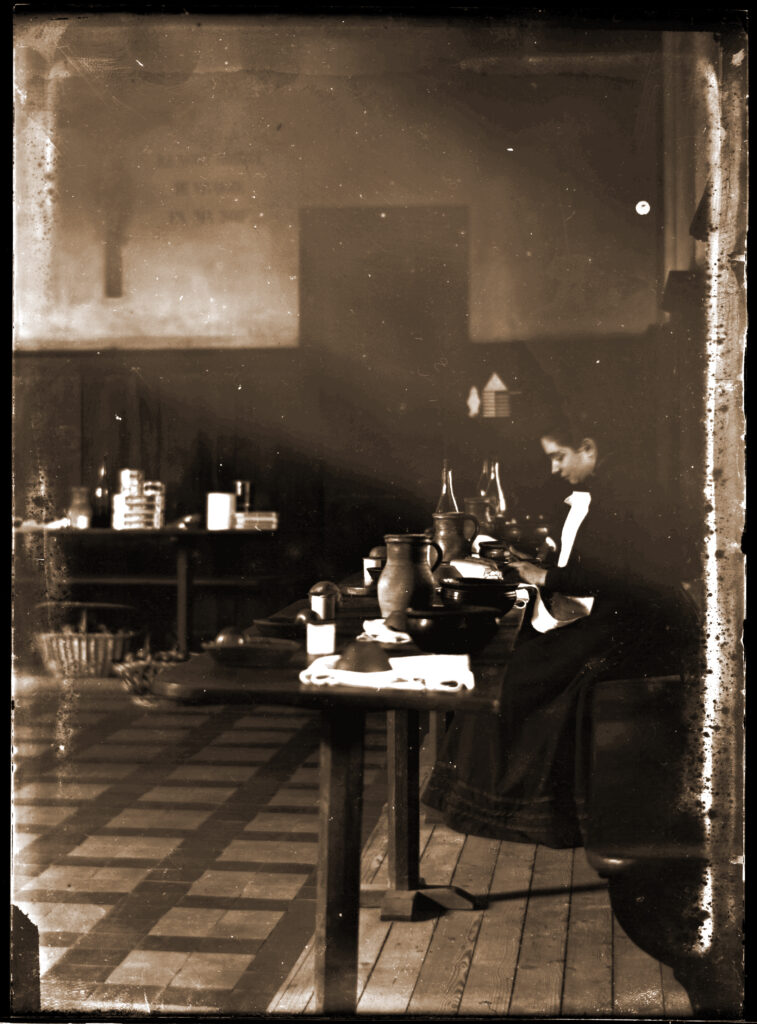
The waitress brings the "portion" to the sisters, the plate already filled. The drink and the bread are on the table.
The sisters keep their eyes lowered throughout the meal and have to accept with a good heart what is served to them, without asking anything more for them except bread and water.
At the signal of the prioress, the semainière said the prayers of thanksgiving. The sisters get up and go silently to recreation.
What do we eat at the monastery?
Qhat could one eat well in the Carmel, in the time of Thérèse?
The answer involves both the contents of the plate and of fort complex table manners.
Please, no forks!
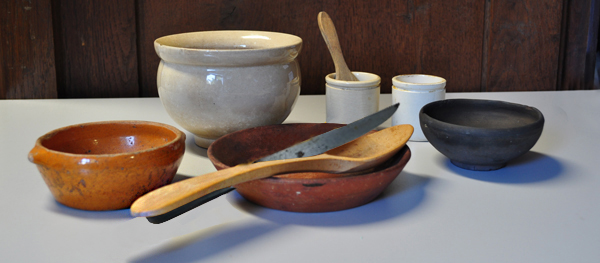
Breakfast
A leek and potato soup, as was the norm at the time. At Les Buissonnets, we had an onion soup in the morning.
In Lent: bread and simply clear broth.
At Sunday breakfast, after mass, around 9 a.m., very hot rice with sorrel was served in large yellow soup tureens (according to an oral tradition).
Lunch and dinner
No meat except for sick sisters.
At noon, we eat fish or eggs (but no eggs in Lent), with vegetables and fruit. Sweet dairy products, midday or evening. A very small piece of cheese on occasion.
In the evening, only vegetables and fruits. Remember that vegetables and fruits come almost exclusively from the garden.
Lenten Snack for Supper
A clear broth and the fruit left over from the afternoon.
Bread in every bite
You should not eat a single bite, either of fish, vegetables or dessert, without bread, which was the basis of all food. Without bread with every bite, we would have treated the sisters as gourmets!
For the parties
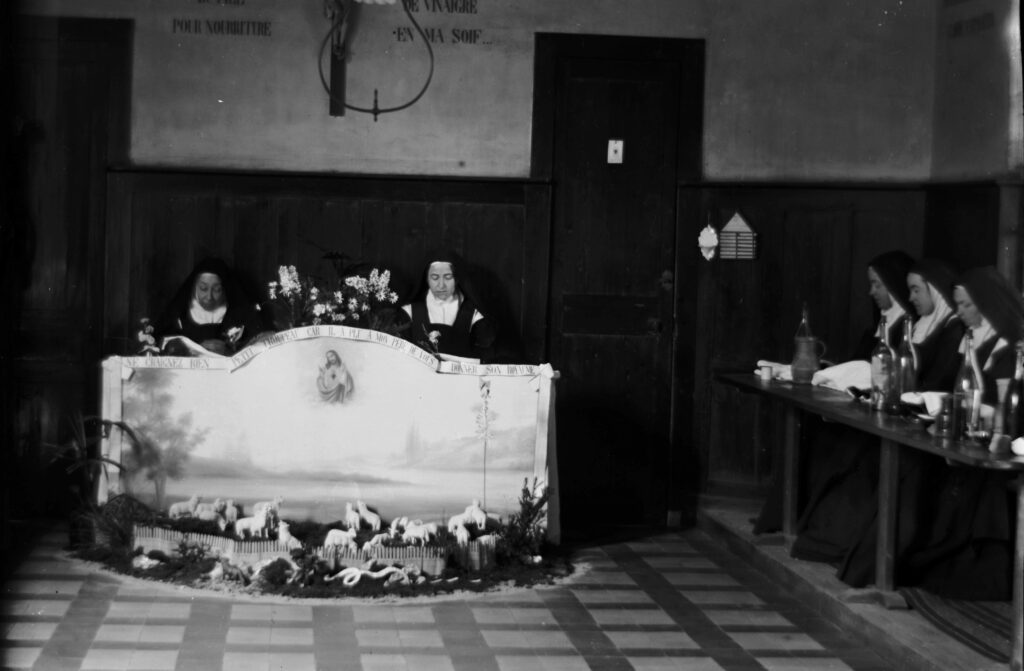
The refectory was decorated on the occasion of the big parties.
The menu was a bit more elaborate, but still meatless. Certain dishes could be offered by the families of the Carmelites.
Marie Guérin's letters to her parents give us precious information on festive meals: "Thank you, thank you... good dishes of cream and bottles of white wine" (Sep 7, 1895) ; "another basket of plums" (Sept. 1895) ; "buckwheat pancakes, pancakes, donuts, pets de none" (Dec 28, 1895) ; etc Sometimes she makes a direct request: "For the feast of our Mother do not could we not have trout?" (13 1896 June).
Little recipes of the time
simmered soup
The word simmered means "simmered" in Norman patois. It is also what in the last century was called the panada, which was used as porridge for weaned babies.
Every evening at the Carmel of Lisieux, the lay sisters came from the kitchen to the heating room for recreation with baskets carefully stretched with white linen, and began to cut a good quantity of bread into small pieces.
The next day, we put this cut bread in lightly salted boiling water, and we let the mixture "simmer" for a long time, until we obtain a creamy soup, from which we can no longer distinguish the pieces. . This soup was eaten every morning from Easter to September 14. We could then add a little milk and butter to it, which we did not do from September 14 to Easter (fasting of the Order), because then we did not take anything in the morning, but we had this soup with the meal of extra noon.
It happened that the soup was more or less thick to the chagrin of the young people (worried about their figure?), who were rebuffed by the older ones: "In our time, the wooden spoon could stand there!" During small inner storms, where it is easy to dwell on one's grievances, it was recommended: "Do not make simmered soup".
Apple omelet
For days of great celebrations, Sr. Geneviève (Céline, who was Provisional) had omelettes made with sweet apple sauce.
Lightly cook the peeled and cut apples with a little water and sugar, and set them aside.
We then make the omelette, with the eggs beaten in water and a little flour, for volume and consistency.
We fold the omelet with the apples in it.
Sorrel rice
On Sundays, we made sorrel rice soup, which little Thérèse evokes in her words reported in the Yellow notebook, on the date of August 12 (word n°5). Boil the rice as usual. Fry sorrel in butter until cooked. Add the sorrel to the cooked rice.
How to eat in the refectory ?
Three texts describe the Carmelite ways :
The Ceremonial
The Community comes from the choir to the refectory, morning and evening... reciting one or more times, depending on the length of the path, the psalm De Profundis for all the deceased and in particular for the benefactors. Arriving at the refectory, the Sisters make a deep bow two by two before the cross placed above the table of the Prioress, divide into two choirs and line up near the tables, the youngest at the bottom of the refectory and the older ones near the entrance. They stand there, turned in chorus, until all are lined up; then the semainière says the verse in her place At porta inferi, and at the same time the Sisters turn towards the cross until the end of the verse.
After answering Amen, they turn around in chorus; then the Prioress gives the sign to begin the blessing of the table. At this sign, the semainière says the blessing, making a half bow to the Community, and the Sisters repeat blessing, also making a half bow; the semainière begins with one of the verses marked in the breviary, the Sisters continue it with the Glory Patri ; the weekday says the Father noster, and the Sisters continue in low voices, deeply bowed. At the sign of the Prioress, all rise; each makes the sign of the cross. After the benediction, they sit down to table quietly and without confusion, and the reader ascends the pulpit. When all the Sisters are seated, the Prioress rings the little bell to start the reading; about a minute later, she rings a second bell to start the meal.
[On certain holidays, we modify this little ritual a little, on holy days as well.]
The Spiritual Direction Manual
The blessing being finished, we sit down at the table, and we remain there very modest, the hands under the Scapular, the lowered sight and the spirit elevated to God, imagining that we are in the company of Our Lord. and of the Apostles, in the Holy Cenacle, of which the refectory is the image. When you have rung the second ring of the bell, after having made the sign of the cross and unfolded your napkin, you take your bread to kiss it, blessing God for what he gives us to sustain ourselves; then they begin their repair, each receiving from the waitress what she presents to her, like an alms which God sends her, and considering herself as truly poor in Jesus Christ. This consideration should lead us to despise nothing that is presented to us, whether good or bad; if it is not according to our taste, we must remember the gall and the vinegar that Our Lord took on the cross for our love.
One must also not let oneself go so far in satisfying the needs of the body that the mind only thinks of that; but one must reserve the ear and the heart to hear and savor the reading, as did the Apostles, listening to the divine words of Jesus Christ during the Last Supper. One must still try to be very modest and mortified on the side of sight; refraining from looking sideways. When drinking, you hold your cup with both hands; it is an ancient custom of the Order, and before drinking one makes the sign of the cross over it.
Exaction Paper
Offer to abstain from what will be most to their liking, and to take more willingly what will be less so, remembering the gall and the vinegar, with which the same Son of God was quenched on the cross. Remember also that Our Lord is pleased to communicate from this life onwards the sweetness of his spirit, to souls who willingly deprive themselves for love of Him of the satisfactions of their senses.
They will always have their eyes lowered and fixed in front of them, without turning their heads, and without looking at the others, nor at what they are being served, and when the waitress presents them with the portions, they will bow their heads and body, and they will take what is closest to their hand [close to their hand] without any choice.
They will take care to stand straight, leaning neither on the table nor on the wall, and that their feet are withdrawn under their clothes without putting them on top of each other, and their hands under the scapular, in front of and after the meal. They should also observe modesty in their way of eating, taking care not to do it noisily either too quickly or too slowly, taking care to have done with others.
You have to be careful not to put anything on or drop bread crumbs on the ground. At the end of the meal, you must pick up all those on your napkin, in homage to what Our Lord ordered his apostles, after performing the miracles of the multiplication of the loaves, to pick up the remains, so that nothing was lost. (...) You must also take care not to dirty your fingers and your towel as little as possible. One must wash one's spoon and knife, and in all things take great care of cleanliness.
When you fold your napkin, you have to put your cup and everything else on it, as gently as you can on the table, so as not to make any noise that interrupts the reading, which you also have to observe. throughout the refectory.


